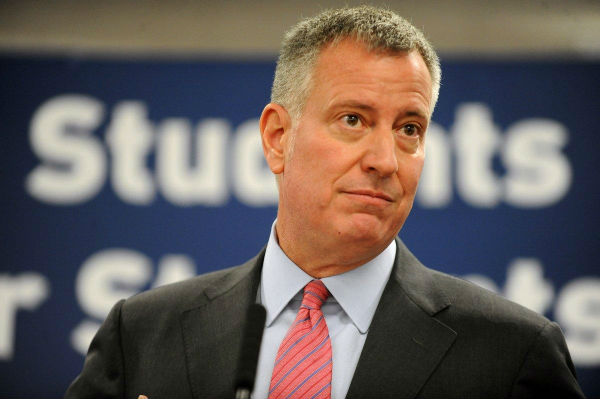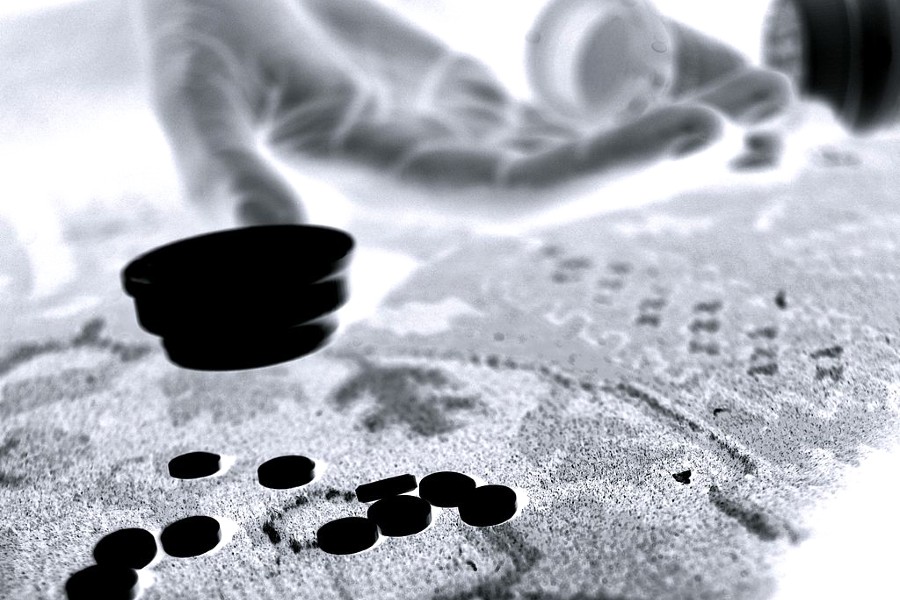 The Health Department today published two Epi Data Briefs that point to an increase in hypertension rates from Harlem To Hollis. Hypertension, or high blood pressure, is a leading contributor to heart disease and stroke, two diseases which together account for 1 in 5 premature deaths (under age 65) in New York City. In the past decade, the prevalence of hypertension in New Yorkers has increased by 11 percent. Today, over 1 in 4 adults in New York City (estimated 1.8 million people) report having hypertension.
The Health Department today published two Epi Data Briefs that point to an increase in hypertension rates from Harlem To Hollis. Hypertension, or high blood pressure, is a leading contributor to heart disease and stroke, two diseases which together account for 1 in 5 premature deaths (under age 65) in New York City. In the past decade, the prevalence of hypertension in New Yorkers has increased by 11 percent. Today, over 1 in 4 adults in New York City (estimated 1.8 million people) report having hypertension.
The first Epi Data Brief, “Hypertension in New York City: Disparities in Prevalence,” highlights populations that have a greater burden of hypertension and describes how many New Yorkers are not meeting healthy lifestyle recommendations that are important in preventing hypertension and its complications.
The second Epi Data Brief, “Hypertension Hospitalizations and Related Morbidity in New York City,” shows that there were nearly 100,000 hospitalizations for hypertension, heart disease or stroke in 2014, totaling over half a million days in the hospital.
Both Epi Data Briefs are available here.
As part of Mayor de Blasio’s OneNYC goal of reducing premature mortality by 25 percent by 2040 and the Health Department’s Take Care New York 2020 target of reducing sodium intake among New Yorkers, the Health Department will convene key stakeholders in 2017 to discuss and develop a citywide response to reduce hypertension rates.
“Hypertension is a leading cause of heart disease and stroke. It’s a condition the majority of New Yorkers either have or are on track to develop, but it doesn’t have to be our destiny,” said Health Commissioner Dr. Mary T. Bassett. “The reports we released today also highlight the striking disparities in burden of hypertension, in particular among the Black and Latino populations and those living in high-poverty neighborhoods. We have made significant gains in reducing smoking prevalence over the past decade, and we want to see the same in hypertension. The Health Department will be launching a citywide hypertension response to ensure every New Yorker, regardless of race or neighborhood they reside in, has access to the resources and knowledge they need to prevent and control this disease.”
“These new data underscore the importance of efforts to better manage hypertension citywide,” said Stanley Brezenoff, Interim President and CEO of NYC Health + Hospitals. “This is a clarion call to the health care community to better control blood pressure through high-quality outpatient care, which will help prevent avoidable hospitalizations for New Yorkers—an ongoing focus of our public health system. We look forward to partnering with the Department of Health and Mental Hygiene to find innovative solutions.”
Hypertension was more commonly reported among adults who are Black or Latino compared with those who are White (35 percent and 33 percent vs. 24 percent) and those living in very high-poverty neighborhoods compared to those living in low-poverty neighborhoods (32 percent vs. 24 percent).
“Hypertension is a contributing cause to hospitalization for patients across the city,” said Dr. Steven J. Corwin, president and CEO of NewYork-Presbyterian. “Although we have made some progress in terms of treatments, it remains a growing problem that we as New Yorkers have to work together to address. NewYork-Presbyterian looks forward to working with the Health Department to improve the health of our communities.”
“Increasing rates of high blood pressure are of grave concern. We share a common goal with the NYCDOH-MH to help people in our communities stay healthy and reduce the prevalence of hypertension,” said Dr. Robert Ostfeld, M.D., M.Sc., cardiologist, director of preventive cardiology at Montefiore Health System and founder and director of the Montefiore-Einstein Cardiac Wellness Program. “Providers at Montefiore’s Wellness Program work with individuals to help them make key diet and lifestyle changes under the care and guidance of our expert, multidisciplinary team. We look forward to continuing to partner with the NYCDOH-MH to promote healthier lifestyles.”
“The American Heart Association applauds the focus on hypertension in New York City,” said Mitchell Elkind, MD, MS, FAAN, FAHA, a neurologist and spokesperson for the American Heart Association / American Stroke Association. “Diagnosing and treating high blood pressure with lifestyle counseling and with the right medications can prevent hospital admissions, heart attacks, strokes, heart failure, and premature death. The AHA welcomes any opportunity to work with the New York City Department of Health and Mental Hygiene to control high blood pressure in New York City and optimize cardiovascular and neurological health.”
“Hypertension is at the core of more serious cardiovascular disease, a major ailment prominent in communities of color. As such, I believe that Faith-Based Institutions can lead a vital role in helping to curb this trend and can serve as a vehicle for life-sustaining education & information,” said Rev. Dr. Bruce C. Rivera, Chairperson, Bronx Multi-Faith Advisory Group. “I want to thank DOHMH for its leadership in advancing this effort and helping to bring about a partnership of organizations that are purveyors of trust and community activism. I look forward to lending a hand in ensuring the success of this initiative and the subsequent community partnership that is formed to promote the same.”
“One of our city government’s great strengths is the Department of Health and its predecessor agencies, which for more than two centuries have taken an active role in protecting New Yorkers from public health threats,” said Manhattan Borough President Gale A. Brewer. “I thank Commissioner Bassett and her team for identifying the troubling increase in hypertension and calling attention to this problem’s demographic disparities. I look forward to assisting the Department of Health as it pursues solutions for both.”
“Hypertension is a very common problem and is being identified in an increasingly younger population on Staten Island,” said Ginny Mantello, MD, Director of Health and Wellness in the Office of Borough President James Oddo on Staten Island. “Although genetics plays a role, it is clear that lifestyle and diet are a major component. It is often a silent manifestation of underlying untreated medical, behavioral or social conditions. Education, periodic early screening and lifestyle modification significantly delay and even prevent the onset of the disease.”
“High blood pressure is hard to detect, and only about half of all Americans with hypertension have it under control, putting them at greater risk for heart disease and stroke,” said Assembly Member Richard N. Gottfried, Chair of the Assembly Committee on Health. “With more and more New Yorkers experiencing high blood pressure over the last decade, the Health Department is right to launch a citywide prevention and awareness initiative to reduce hypertension among New Yorkers, similar to the successful campaign to reduce the number of city residents who smoke.”
“It’s no secret that hypertension causes heart attacks and strokes. I’ve been promoting healthy eating and lifestyles for many years. We must make everyone aware of the risks obesity, high salt content and lack of exercise creates. Let’s make sure every New York family follows a healthy diet and avoids the bad habits that threaten lives,” said Assembly Member Felix W. Ortiz.
Among the reports’ highlights:
- Hypertension was more commonly reported among adults who are Black or Latino compared with those who are White (35 percent and 33 percent vs. 24 percent) and those living in very high-poverty neighborhoods compared to those living in low-poverty neighborhoods (32 percent vs. 24 percent).
- While hypertension is typically more common among older adults, over one in ten adults younger than 45 years of age reported having hypertension in 2015.
- The report also describes how many New Yorkers are not meeting healthy lifestyle recommendations that are important in preventing hypertension and its complications. For example, in 2010, two-thirds of all adults reported consuming more sodium than the recommended daily limit (<2300 mg per day).
- There were nearly 100,000 hospitalizations for hypertension, heart disease or stroke in 2014. More than half (57 percent) of the hypertension hospitalizations, which are typically preventable with access to regular, high quality primary care, occurred in adults less than 65 years of age, with very high-poverty neighborhoods having 3.5 times the rate among adults living in low-poverty neighborhoods. An important step in decreasing the number of hospitalizations is preventing and controlling hypertension.
New Yorkers can prevent and control hypertension by taking steps to live a heart-healthy lifestyle, such as eating a healthy diet low in sodium (salt), getting active, maintaining a healthy weight, and if prescribed, taking medicines as directed. New Yorkers can also check blood pressure regularly at home or at a local pharmacy. For more information, call 311 to order free copies of our High Blood Pressure Health Bulletin.
The average New York City adult consumes nearly 40 percent more sodium than the daily recommended limit. High sodium intake can increase blood pressure and the risk of heart disease and stroke. Over 75 percent of the sodium consumed by Americans comes from packaged and restaurant foods, and even similar foods can contain highly variable amounts of sodium, making it difficult for individuals to lower their sodium intake.
The Health Department this month launched the “Look Before You Eat” campaign, which reminds New Yorkers to look for the sodium warning icons on menus when dining in chain restaurants throughout New York City. The salt shaker icon – part of the City’s new mandated sodium warning rule for chain restaurants – must be posted next to menu items with 2,300 mg of sodium or more, the total daily recommended limit.
Become a Harlem Insider!
By submitting this form, you are consenting to receive marketing emails from: Harlem World Magazine, 2521 1/2 west 42nd street, Los Angeles, CA, 90008, https://www.harlemworldmagazine.com. You can revoke your consent to receive emails at any time by using the SafeUnsubscribe® link, found at the bottom of every email. Emails are serviced by Constant Contact








